The best L-mount lenses in 2022: the best Panasonic, Sigma and Leica lenses today
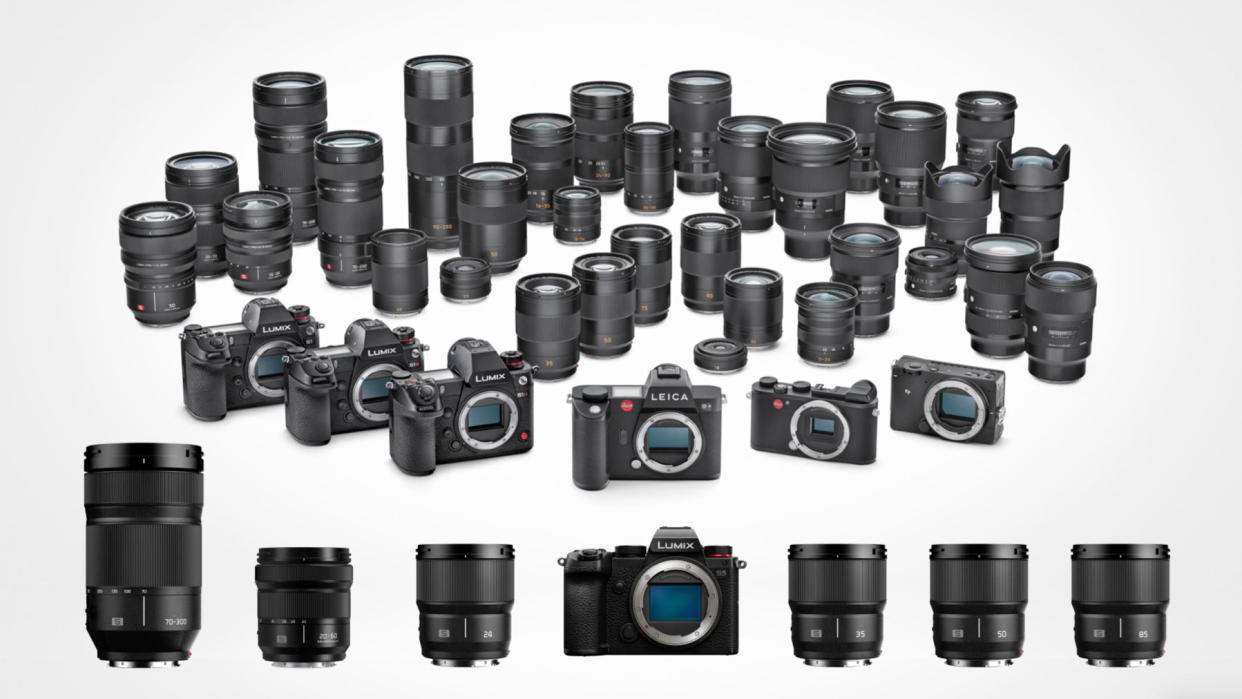
These are the best L-mount lenses right now, for Panasonic's Lumix S full frame mirrorless cameras, the Leica SL and – let's not forget it – the clever little Sigma fp and fp L! The L mount is a comparatively new format, but it's backed by three big names in photography and it's gained a lot of ground in a very short time.
Related articles
• Best Panasonic cameras
• Best Leica cameras
• Best Leica M lenses
• Best mirrorless cameras
• Best 4K cameras
• Best professional cameras
Growing in popularity, the L-mount is based on Leica’s T-mount system, which stems from the Leica T (Typ 701) APS-C format digital camera, launched in 2014. With the subsequent launch of the Leica SL full-frame camera, the name was changed to the L-mount, with sub-categories of TL for APS-C format lenses and SL for full-frame. Bigger news came in September 2018, with the advent of the L-mount Alliance, formed by Leica, Panasonic and Sigma. This enabled all three companies to manufacture cameras with ‘interchangeable’ lenses in every sense of the word.
Headline-grabbing cameras that use the L-mount include Leica’s own 47-megapixel Leica SL2, the Panasonic Lumix S1 24.2-megapixel all-rounder, the high-res 47.3-megapixel Panasonic Lumix S1R, the more video-centric 24.2-megapixel Panasonic Lumix S1H with 6K movie capture capability, and the most recent, budget-conscious Panasonic Lumix S5, which has a 24.2-megapixel image sensor. For its part, Sigma has its Sigma fp compact system camera, which has a remarkably small and lightweight build, while its Sigma fp L stablemate packs an impressive 61MP sensor for ultra-high-res image capture.
The supporting cast of lenses has been ramped up over the last couple of years. Panasonic currently offers seven L-mount lenses, including six zooms and one prime. Leica has the opposite emphasis, with five primes and three zooms. Sigma has the greatest selection of L-mount prime and zoom lenses, some of which are fairly subtle changes to existing DSLR lenses, while others are new or completely redesigned optics specifically made for L-mount (and Sony E-mount) mirrorless cameras. In all cases, the L-mount lenses take advantage of a relatively large mounting flange of 55mm, and a close proximity of 20mm to the image sensor.
We figure that Panasonic users are likely to gravitate towards the Panasonic and Sigma lenses, while Leica users will probably be most interested in Leica glass, so we've split our guide up into three sections, one for each brand.
Best L-mount lenses in 2022
Panasonic L-mount lenses
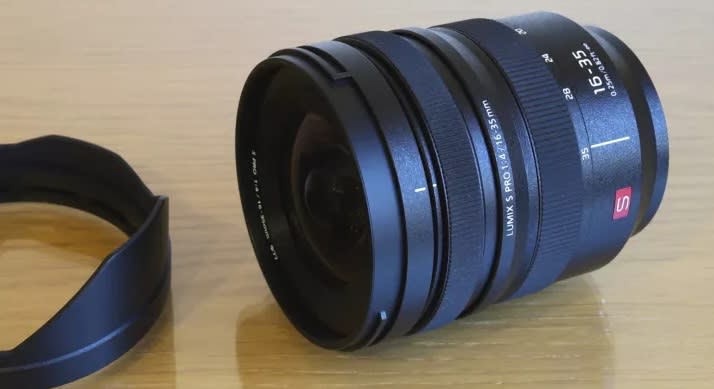
1. Panasonic LUMIX S PRO 16-35mm f/4
Panasonic’s wide-angle zoom is a relatively compact affair
Mount: L-mount | Lens construction: 12 elements in 9 groups | Angle of view: 107 to 63 degrees | Minimum focus distance: 0.25m | Maximum magnification ratio: 0.23x | Filter size: 77mm | Dimensions: 85x100mm | Weight: 500g
Excellent image quality
Refined handling
Aperture rating is ‘only’ f/4 not f/2.8
Quite pricey for an f/4 zoom
Instead of going for f/2.8 glory, Panasonic has settled on a more modest f/4 aperture rating for its first L-mount wide-angle zoom. Plus points include a relatively compact and lightweight build, and the standard of construction is very good, with plentiful weather-seals and a robust yet high-precision feel. The high-grade optical path includes three aspherical elements, plus ED (Extra-low Dispersion) and HRI (High-Refractive-Index) elements. Image quality is excellent in all respects, from impressive sharpness and effective correction of colour fringing and distortions, to great control over ghosting and flare. The high-speed and virtually silent autofocus system is equally useful for stills and video capture.
Read more: Panasonic LUMIX S PRO 16-35mm f/4 review
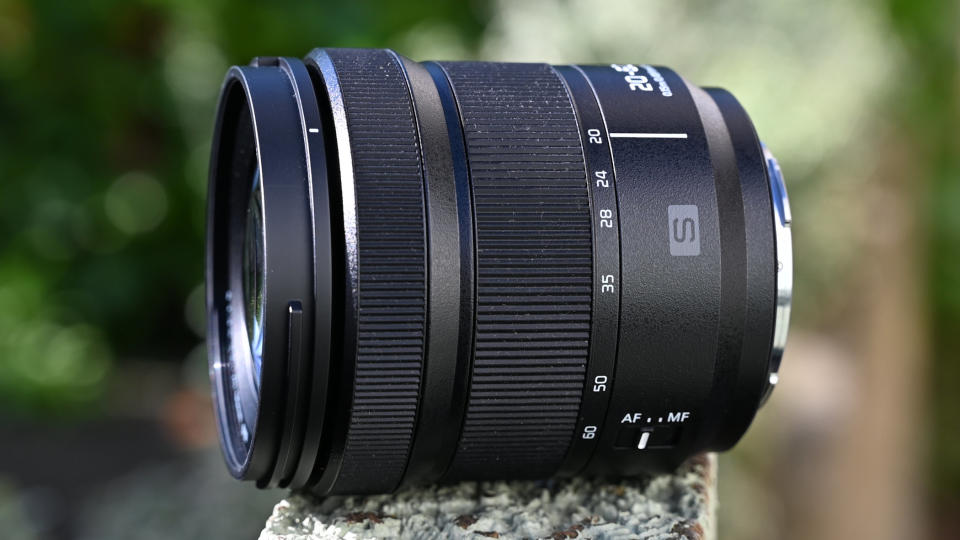
2. Panasonic LUMIX S 20-60mm f/3.5-5.6
A refreshingly affordable and lightweight L-mount zoom
Mount: L-mount | Lens construction: 11 elements in 9 groups | Angle of view: 94 to 40 degrees | Minimum focus distance: 0.15m | Maximum magnification ratio: 0.43x | Filter size: 67mm | Dimensions: 77x87mm | Weight: 350g
Useful and somewhat unique zoom range
Relatively compact and lightweight
Slightly limited telephoto reach
Variable aperture rating
Compared with most standard zoom lenses that have a minimum focal length of 24mm, this Panasonic lens gives a much wider maximum viewing angle of 94 rather than 84 degrees. The difference is clear to see, enabling you to get much more into the frame. Naturally, it loses out a bit for telephoto reach, but the overall zoom range feels full of creative potential. It also saves the need for carrying an additional ultra-wide-angle prime or zoom lens, and the chore of switching between them. The optical path incorporates three ED (Extra-low Dispersion) elements and one UHR (Ultra High Refractive) element, which combine to deliver highly impressive image quality. It’s a compact and lightweight lens that goes large in performance, and is very good value at the price.
Read more: Panasonic LUMIX S 20-60mm f/3.5-5.6 review
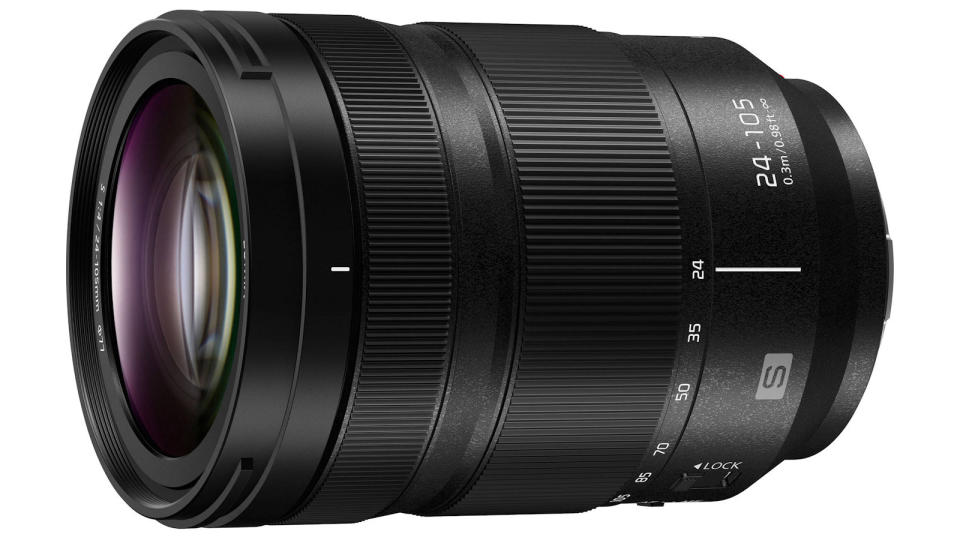
3. Panasonic LUMIX S 24-105mm f/4 Macro OIS
Bigger zoom range equals narrower aperture rating
Mount: L-mount | Lens construction: 16 elements in 13 groups | Angle of view: 84 to 23 degrees | Minimum focus distance: 0.3m | Maximum magnification ratio: 0.5x | Filter size: 77mm | Dimensions: 84x118mm | Weight: 680g
Generous zoom range
Optical image stabilizer
Narrower aperture than 24-70mm
Lacks push-pull focus ring
Panasonic invites you to ‘take a fresh new approach’ with this lens, although the zoom range and f/4 constant-aperture rating will be familiar to users of Canon and Sigma 24-105mm lenses. Smaller, lighter and little more than half the price of Panasonic’s 24-70mm f/2.8 lens, this one lacks ‘PRO’ credentials but is robustly built nevertheless, with a dust and splash resistant construction. It’s not short on quality glass either, with two aspherical ED elements, a further two aspherical and two ED elements, plus a UED (Ultra Extra-low Dispersion) element. The built-in optical stabilizer works in conjunction with Panasonic S-series cameras’ IBIS to give as much as a 6-stop benefit. The linear stepping motor autofocus system is fast and virtually silent, while the minimum focus distance of 0.3 metres enables powerful 0.5x macro magnification.
Read more: Panasonic LUMIX S 24-105mm f/4 Macro OIS review
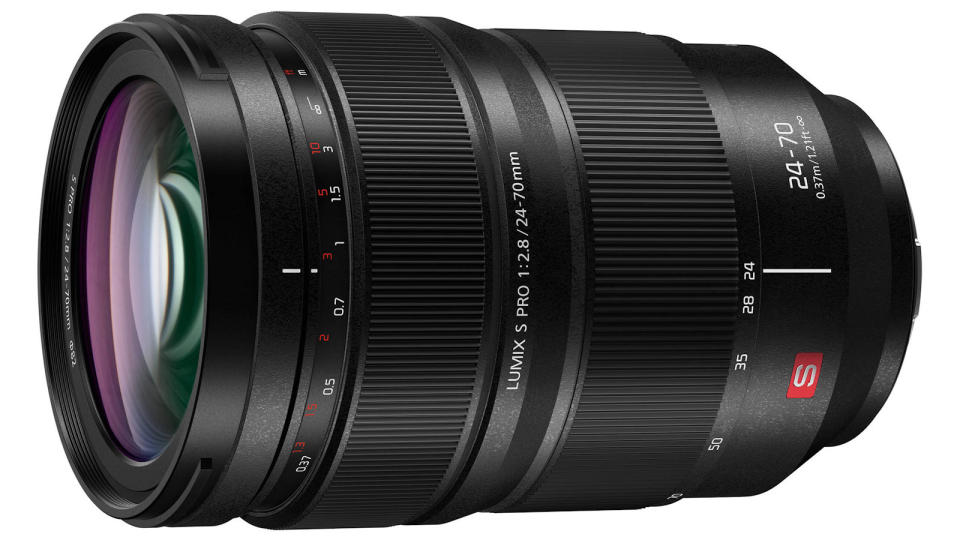
4. Panasonic LUMIX S PRO 24-70mm f/2.8
A heavyweight standard zoom with pro-grade specs
Mount: L-mount | Lens construction: 18 elements in 16 groups | Angle of view: 84 to 34 degrees | Minimum focus distance: 0.37m | Maximum magnification ratio: 0.25x | Filter size: 82mm | Dimensions: 91x140mm | Weight: 935g
Fast and constant f/2.8 aperture
Dust, splash and freeze-resistant
Fairly big, heavy and expensive
Edge sharpness at longer zoom settings
This pro-grade zoom has the preferred f/2.8 constant-aperture rating favored by most enthusiast and professional photographers, along with robust weather-resistant build quality. Panasonic’s S1-series mirrorless cameras are notoriously chunky and the lens follows suit, weighing the best part of a kilogram. Highlights include a fast and near-silent autofocus system, with a push-pull focus ring for switching between autofocus and manual focus. Image quality is mostly impressive although corner-sharpness could be better, especially towards the long end of the zoom range. Bokeh is nice and smooth even when stopping down a little, aided by an 11-blade aperture, while colour fringing and distortions are effectively eliminated by in-camera corrections. However, the competing Sigma 24-70mm f/2.8 DG DN Art lens is every bit as good and only costs half the price.
Read more: Panasonic LUMIX S PRO 24-70mm f/2.8 review
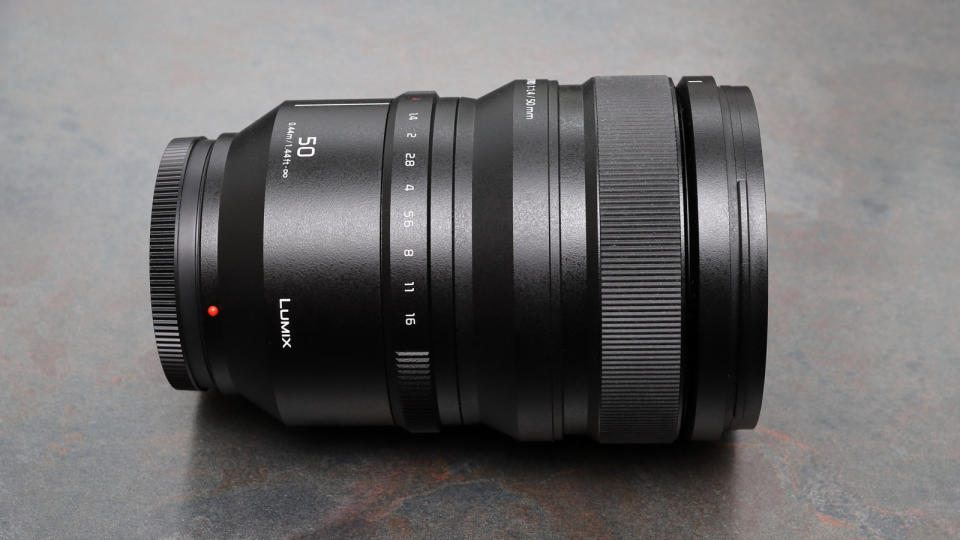
5. Panasonic LUMIX S PRO 50mm f/1.4
A weighty and pricey proposition for a 50mm prime
Mount: L-mount | Lens construction: 13 elements in 11 groups | Angle of view: 47 degrees | Minimum focus distance: 0.44m | Maximum magnification ratio: 0.15x | Filter size: 77mm | Dimensions: 90x130mm | Weight: 955g
Fabulous image quality
Fast, virtually silent autofocus system
Pretty huge for a 50mm prime
Weighty and expensive
If you thought that ‘compact system cameras’ were relatively small and lightweight, Panasonic’s S series bodies will make you think again, and this lens is frankly enormous for a 50mm prime, weighing in at almost a kilogram. Even so, handling is refined with tactile aperture and focus rings, the latter having Panasonic’s usual push-pull mechanism for swapping between autofocus and manual focus. Autofocus itself is super-fast and virtually silent, powered by dual linear and stepping motors. The optical path includes two aspherical elements and three extra-low dispersion elements, along with a particularly well-rounded 11-blade diaphragm. Image quality is simply spectacular in all respects. Even so, this hefty lens comes with a similarly weighty price tag.
Read more: Panasonic LUMIX S PRO 50mm f/1.4 review
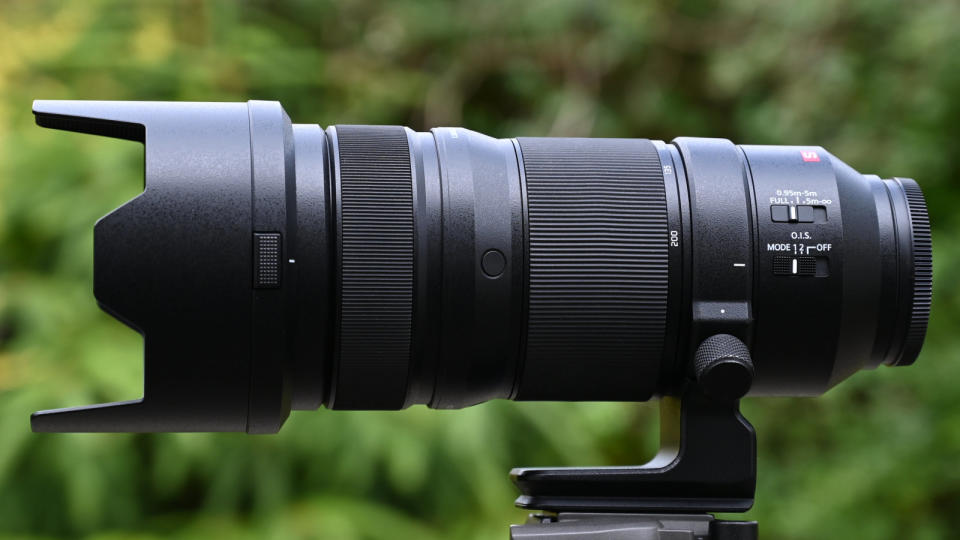
6. Panasonic LUMIX S PRO 70-200mm f/2.8 OIS
This lens ticks all the right boxes for a fast tele zoom
Mount: L-mount | Lens construction: 22 elements in 17 groups | Angle of view: 34 to 12 degrees | Minimum focus distance: 0.95m | Maximum magnification ratio: 0.21x | Filter size: 82mm | Dimensions: 94x209mm | Weight: 1,570g
Dual-mode optical stabilizer
Customisable lens function buttons
Relatively big and heavy
Corner-sharpness could be better
Panasonic’s range-topping 70-200mm zoom is about 50 per cent heavier and 50 per cent pricier than its excellent f/4 stablemate. As well as being an f/stop faster, the f/2.8 lens gains switchable static and panning optical stabilization modes and a set of three customisable function buttons, typically used for AF-hold. As usual for Panasonic PRO lenses, this one is Leica certified and has a tough splash/dust-proof construction. It comes complete with a removable tripod mounting collar, which has an Arca-Swiss compatible foot. Autofocus is rapid and virtually silent, and the absence of focus breathing is a bonus for video capture. Image quality is very good overall, with smooth bokeh and entirely negligible distortions or colour fringing. In our tests, however, the lens didn’t prove quite as sharp as the less expensive f/4 zoom.
Read more: Panasonic LUMIX S PRO 70-200mm f/2.8 OIS review
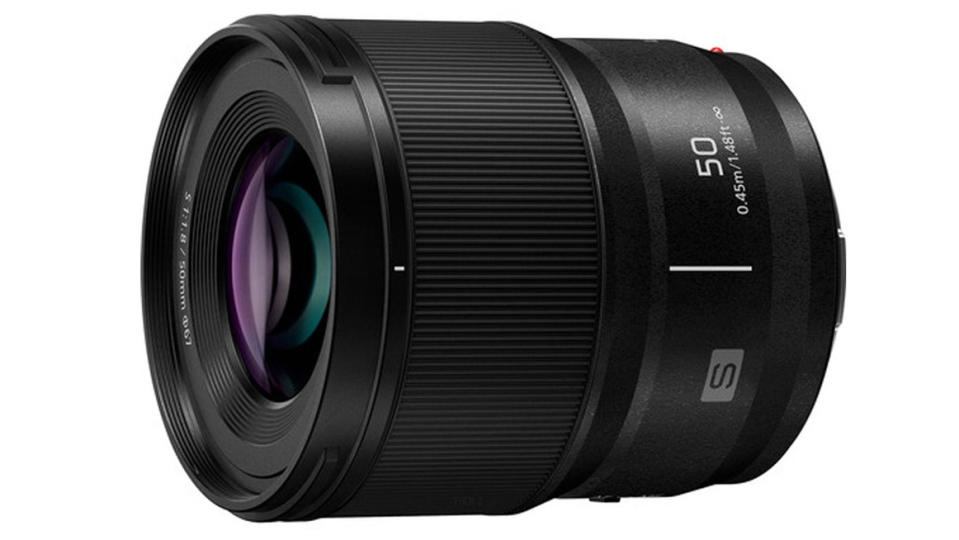
7. Panasonic LUMIX S 50mm f/1.8
Compact, light and well-priced - a true L-mount 'nifty fifty'
Mount: L-mount | Lens construction: 9 elements in 8 groups | Angle of view: 47 degrees | Minimum focus distance: 0.45m | Maximum magnification ratio: 0.14x | Filter size: 67mm | Dimensions: 73.6x82mm | Weight: 300g
Autofocus speed
Weather resistance
Image quality
Bokeh could be better
No integrated optical stabilization
This is the second 50mm prime that Panasonic has released for its L-mount cameras. But while the first (above) was a heavy and bulky f/1.4 offering, this f/1.8 lens is less than one third the weight - at just 300g - and it's significantly more compact. You still get a tasty 9-element optical stack including 3 aspherical elements, 1 extra-low dispersion element and an ultra-high refractive lens. As with Panasonic's other recent f/1.8 L-mount primes, this 50mm features a dust, splash and freeze-resistant design for all-weather usage, while a 9-blade rounded diaphragm promises smooth bokeh in defocused areas.
Read more: Panasonic LUMIX S 50mm f/1.8 review
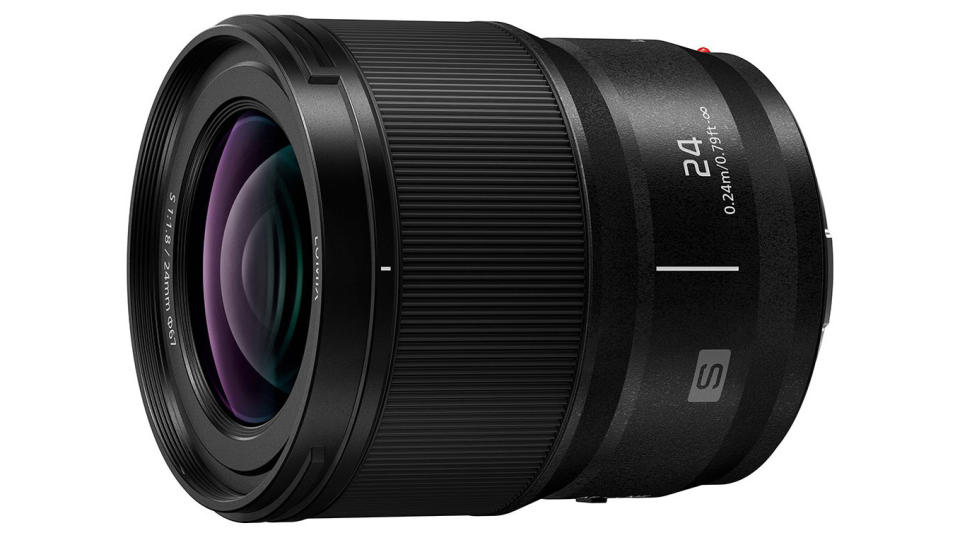
8. Panasonic LUMIX S 24mm f/1.8
A light and competitively-priced wide L-mount prime
Mount: L-mount | Lens construction: 12 elements in 11 groups | Angle of view: 84 degrees | Minimum focus distance: 0.24m | Maximum magnification ratio: 0.15x | Filter size: 67mm | Dimensions: 74x82mm | Weight: 310g
Compact, and light weight at just 310g, this fast prime is a great choice for shooting landscapes, architecture, street scenes, or anything demanding a fairly wide field of view. The lens has been designed to work equally well whether you're shooting stills or video. The latter benefits from smooth aperture changes, while the f/1.8 maximum and 9-bladed rounded diaphragm ensures excellent separation between your subject and its background. Dust and water resistant construction gives this lens all-weather versatility, and though it's not a cheap lens, the price does compare well with comparable lenses from other manufacturers.
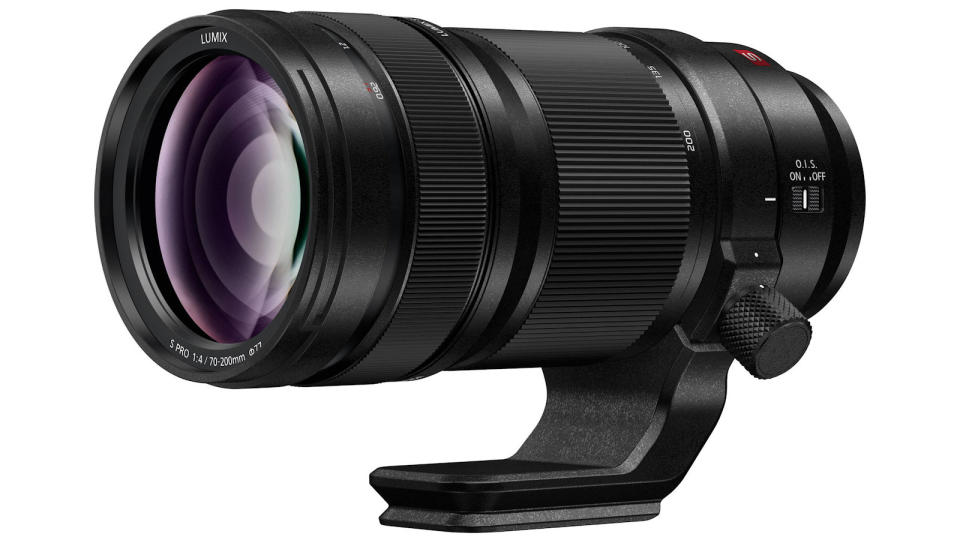
9. Panasonic LUMIX S PRO 70-200mm f/4 OIS
The smart telephoto option for L-mount cameras
Mount: L-mount | Lens construction: 23 elements in 17 groups | Angle of view: 34 to 12 degrees | Minimum focus distance: 0.92m | Maximum magnification ratio: 0.25x | Filter size: 77mm | Dimensions: 84x179mm | Weight: 985g
Autofocus is very fast and virtually silent
Removable Arca-Swiss tripod ring
Unusual push-pull focus ring
Quite pricey for a 70-200mm f/4 lens
This telephoto zoom weighs in at just under a kilogram and makes for well-balanced shooting with Panasonic S-series cameras. The combination is also perfectly balanced on a monopod or tripod, if you use the removable tripod mounting ring that’s supplied with the lens. The high-tech optical path delivers sumptuous image quality and the constant f/4 aperture rating enables a fairly tight depth of field, while the quality of bokeh is nice and smooth. Autofocus is super-fast and the built-in optical image stabilizer works in conjunction with the 5-axis, sensor-shift stabilizers of S-series bodies to deliver up to 6-stop performance. It’s quite pricey for a 70-200mm f/4 zoom but you definitely get what you pay for, and it’s only about two-thirds the weight of Panasonic’s pricier 70-200mm f/2.8 zoom.
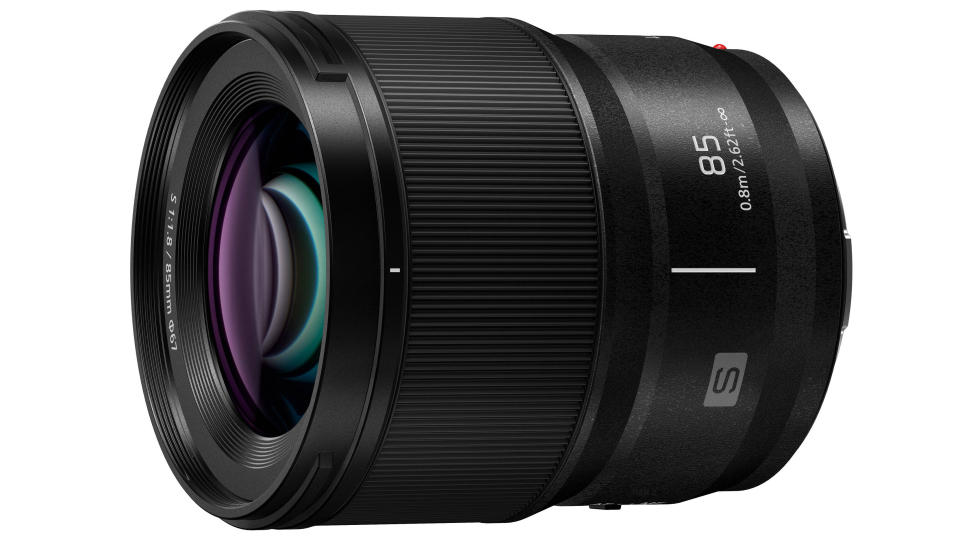
10. Panasonic LUMIX S 85mm f/1.8
A practical, well-priced portrait prime
Mount: L-mount | Lens construction: 9 elements in 8 groups | Angle of view: 29 degrees | Minimum focus distance: 0.8m | Maximum magnification ratio: 0.13x | Filter size: 67mm | Dimensions: 73.6x82mm | Weight: 355g
Any interchangeable lens camera system needs a decent portrait prime in its ranks, and Panasonic's Lumix S 85mm F1.8 makes a strong case for itself. While its f/1.8 maximum aperture won't get your backgrounds quite as blurred as an f/1.4 or faster optic, the slightly smaller aperture helps keep the lens itself refreshingly small for a portrait lens, at just 73.6mm long and 355g in weight. You'll also get a better in-focus hit rate shooting at f/1.8 than f/1.4 or f/1.2. The dust and splash-resistant design means you needn't worry when shooting in inclement weather, while smooth aperture changes are good news for smooth transitions in video.
Best Sigma L-mount lenses
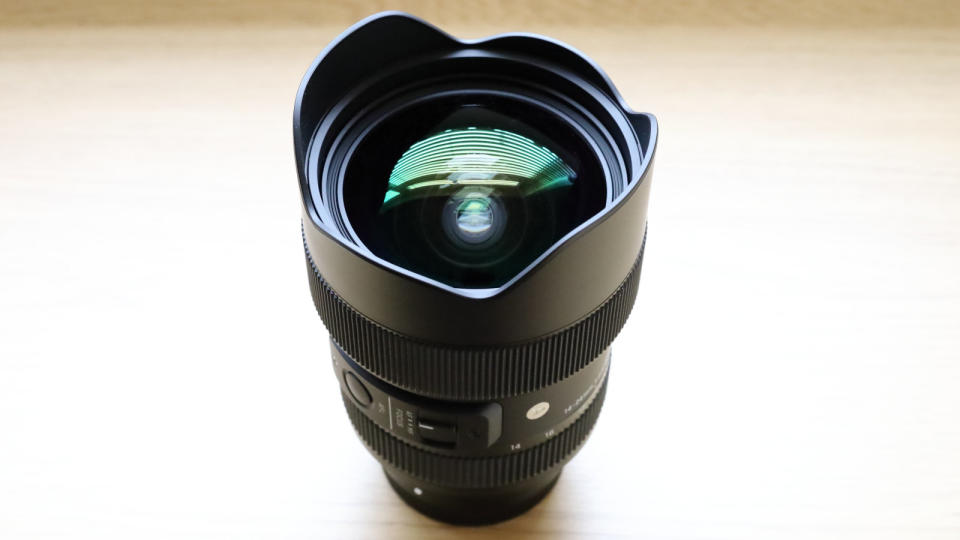
11. Sigma 14-24mm f/2.8 DG DN | A
A super-wide zoom with superb performance
Mount: L-mount | Lens construction: 18 elements in 13 groups | Angle of view: 114-84 degrees | Minimum focus distance: 0.28m | Maximum magnification ratio: 0.14x | Filter size: Gel (rear) | Dimensions: 85x131mm | Weight: 795g
Huge 114-degree maximum viewing angle
Superb sharpness and contrast
Some barrel distortion if uncorrected
No front filter thread
With a noticeably larger maximum viewing angle than Panasonic’s 16-35mm f/4 ultra-wide-angle zoom, this Sigma lens also has a faster f/2.8 aperture rating. Build quality is excellent, from the brass mounting plate to the built-in hood, with plentiful weather-seals along the way. Three aspherical elements, one ‘Fluorite’ Low Dispersion element and no less than five Special Low Dispersion elements combine to deliver spectacular image quality, while the combination of conventional and nano-structure coatings keep ghosting and flare to an absolute minimum. Unlike in Sigma’s 14-24mm DG HSM Art lens for SLRs, there’s some noticeable barrel distortion at the short end of the zoom range, but in-camera or software corrections can take care of it.
Read more: Sigma 14-24mm f/2.8 DG DN | A review
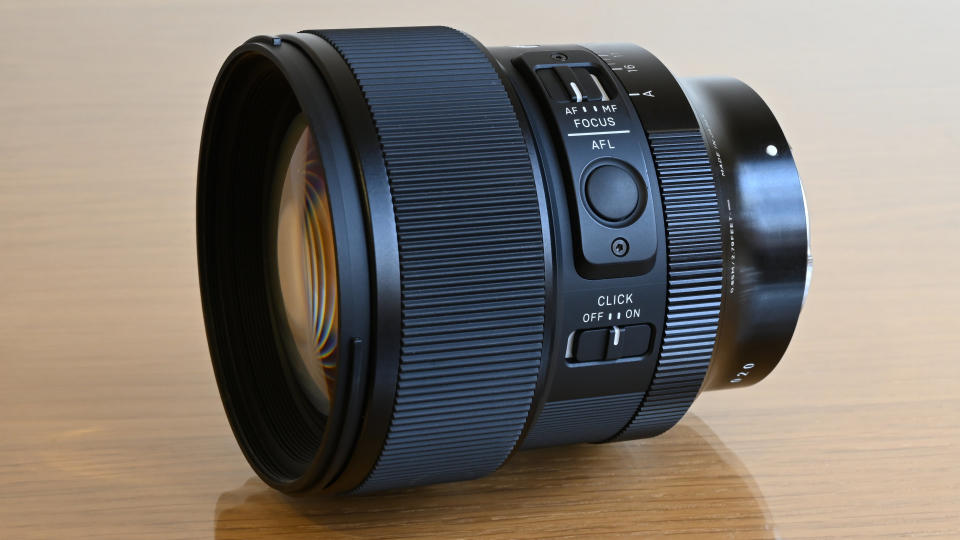
12. Sigma 85mm f/1.4 DG DN | A
This Sigma beat Panasonic’s 85mm prime to the market
Mount: L-mount | Lens construction: 15 elements in 11 groups | Angle of view: 29 degrees | Minimum focus distance: 0.85m | Maximum magnification ratio: 0.12x | Filter size: 77mm | Dimensions: 83x94mm | Weight: 630g
Fabulous image quality
Solid construction
Vignetting is noticeable at wide apertures
Pincushion distortion if left uncorrected
Unlike the Sigma 35mm and 50mm ‘DG HSM’ Art lenses featured in this buying guide, the 85mm prime was designed exclusively for mirrorless cameras, rather than being adapted from DSLR optics. At the time of writing, Panasonic was just unveiling its LUMIX S 85mm f/1.8 lens, but the Sigma had already been on sale for three months, and is two-thirds of an f/stop faster. Ideal for portraiture, the Sigma delivers superb sharpness and contrast, along with beautiful bokeh. The quality of bokeh remains excellent when stopping down a little, thanks to a very well-rounded 11-blade diaphragm. Quality glass includes five SLD (Special Low Dispersion) elements, four HRI (High Refractive Index) elements and one aspherical element. Build quality is excellent with comprehensive weather-seals and a fluorine coating on the front element. A customizable Autofocus hold button is featured, along with a de-click switch for stepless aperture control, ideal for movie capture.
Read more: Sigma 85mm F1.4 DG DN Art review
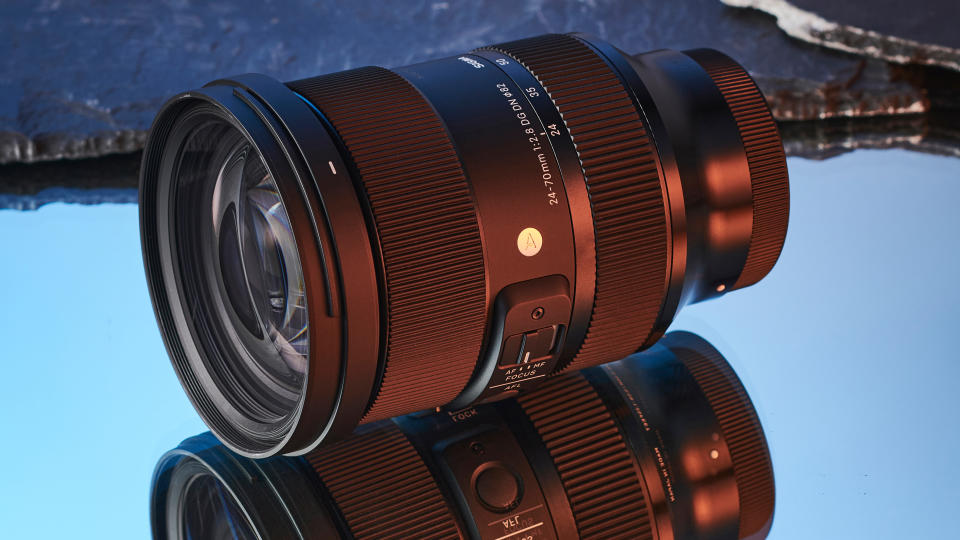
13. Sigma 24-70mm f/2.8 AF DG DN | A
A standard zoom that lives up to its ‘Art’ billing
Mount: L-mount | Lens construction: 19 elements in 15 groups | Angle of view: 84 to 34 degrees | Minimum focus distance: 0.18m | Maximum magnification ratio: 0.34x | Filter size: 82mm | Dimensions: 88x123mm | Weight: 835g
Top-grade optical path
Super-fast, silent autofocus
Feels big and heavy
Distortion and vignetting if uncorrected
Sigma’s 24-70mm f/2.8 Art lens for Canon and Nikon full-frame DSLRs has made quite a name for itself. Following in its footsteps, the ‘DN’ edition is a completely new lens for mirrorless cameras, so far available in Sony FE as well as Leica L-mount options. High-grade optics include no less than six FLD (‘Fluorite’ Low Dispersion) and two SLD (Special Low Dispersion) elements. Top-notch construction includes comprehensive weather-seals and a super-fast, essentially silent stepping motor autofocus system. Barrel distortion at 24mm and vignetting at f/2.8 are rather noticeable when uncorrected in-camera but overall handling, performance and image quality are excellent, and it’s ultra-sharp. At half the price of Panasonic’s 24-70mm f/2.8 lens, the Sigma is a steal at the price.
Read more: Sigma 24-70mm f/2.8 AF DG DN | A review
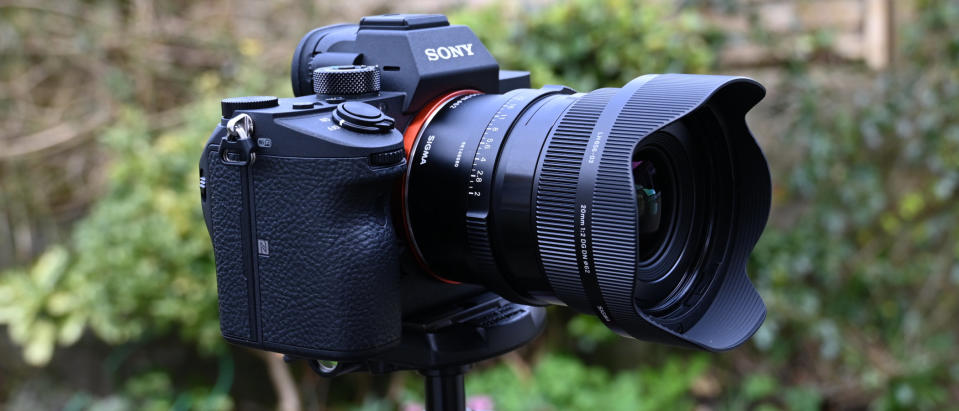
14. Sigma 20mm F2 DG DN |C
Typically compact but big on quality
Mount: L-mount | Lens construction: 13 Elements in 11 Groups | Angle of view: 95.5 degrees | Minimum focus distance: 0.22m | Filter size: 62mm | Dimensions: 70x72mm | Weight: 370g
Compact but sturdy
Metal barrel, hood and cap
Aperture control ring
No aperture ‘de-click’ facility
Noticeable distortion if uncorrected
No focus distance scale
The Sigma 20mm F2 DG DN | C joins a growing range of fairly fast primes for Sony E-mount and Leica L-mount cameras in Sigma’s I-series range, which includes the 35mm F2 DG DN | C and 65mm F2 DG DN | C. There are also 24mm F2 and 45mm F2.8 options in the line-up. The look and feel are virtually identical in each case, with the same ‘Contemporary’ design ethos seeking to deliver excellent performance from a compact and lightweight build.
Like other lenses in Sigma’s I-series Contemporary line-up, the 20mm has impressive build quality based on a coated brass mounting plate, a metal barrel and even a metal lens hood and lens cap, the latter of which is magnetic. A more regular plastic lens cap is also supplied in the box. The construction features multiple weather-seals and is dust- and moisture-resistant, it combines intuitive handling with fast autofocus and impressive image quality, making it an ideal ultra-wide-angle lens for architectural interiors, sweeping landscapes, astrophotography and more besides.
Read more: Sigma 20mm F2 DG DN | C review
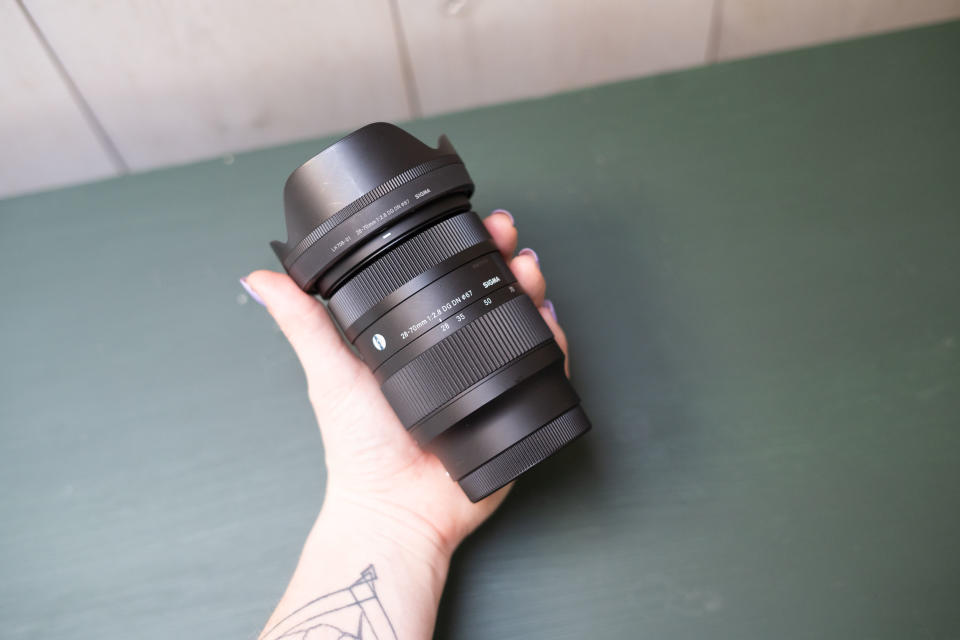
15. Sigma 28-70mm f/2.8 DG DN | C
A compact, lightweight and affordable lens with a fast constant aperture
Mount: L-mount | Lens construction: 16 elements in 12 groups | Angle of view: 74 to 34 degrees | Minimum focus distance: 0.19m | Filter size: 58mm | Dimensions: 72x101mm | Weight: 470g
f/2.8 maximum aperture
Good value for a fast standard zoom
Lightweight
Not fully weather sealed
Missing 4mm from wide-angle
Corners not so sharp
Sigma’s 24-70mm f/2.8 Art lens for Canon and Nikon full-frame DSLRs has made quite a name for itself. Following in its footsteps, the ‘DN’ edition is a completely new lens for mirrorless cameras, so far available in Sony FE as well as Leica L-mount options. High-grade optics include no less than six FLD (‘Fluorite’ Low Dispersion) and two SLD (Special Low Dispersion) elements. Top-notch construction includes comprehensive weather-seals and a super-fast, essentially silent stepping motor autofocus system. Barrel distortion at 24mm and vignetting at f/2.8 are rather noticeable when uncorrected in-camera but overall handling, performance and image quality are excellent, and it’s ultra-sharp. At half the price of Panasonic’s 24-70mm f/2.8 lens, the Sigma is a steal at the price.
Read more: Sigma 24-70mm f/2.8 AF DG DN | A review
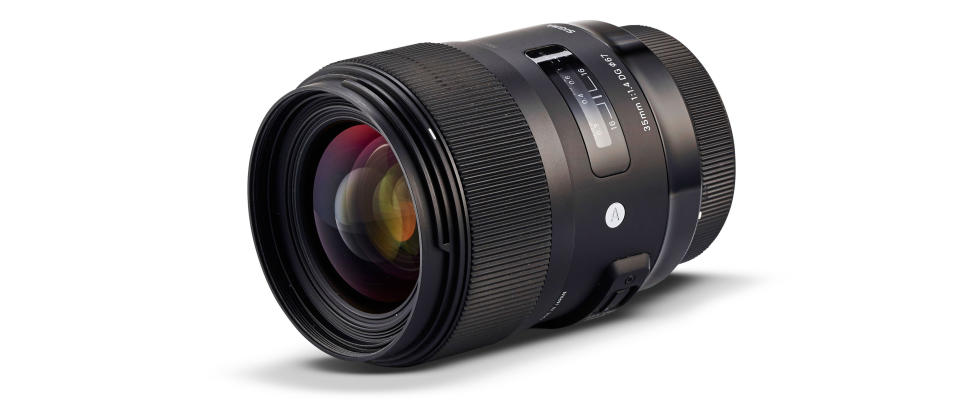
16. Sigma 35mm f/1.4 DG HSM | A
An acclaimed DSLR lens adapted for L-mount
Mount: L-mount | Lens construction: 13 elements in 11 groups | Angle of view: 63 degrees | Minimum focus distance: 0.3m | Maximum magnification ratio: 0.19x | Filter size: 67mm | Dimensions: 77x120mm | Weight: 755g
Reasonably compact and lightweight
Very good image quality
Not specifically designed for mirrorless
Lacks any weather-seals
As Sigma’s first ‘Art’ lens in the Global Vision line-up, the 35mm f/1.4 was originally designed for DSLRs. It’s now available in an L-mount option but still retains most of the original features, including a ring-type ultrasonic rather than stepping motor-based autofocus system. As such, the focus ring is mechanically rather than electronically coupled and enables full-time manual override of autofocus, as well as featuring a physical focus distance scale. Build quality is very good but the design predates Sigma’s inclusion of weather-seals. The high-grade optical path includes an FLD (‘Fluorite’ Low Dispersion) four SLD (Special Low Dispersion) elements and two aspherical elements. Image quality is very good indeed with impressive corner-to-corner sharpness, even at very wide aperture settings.
Read more: Sigma 35mm f/1.4 DG HSM | A review
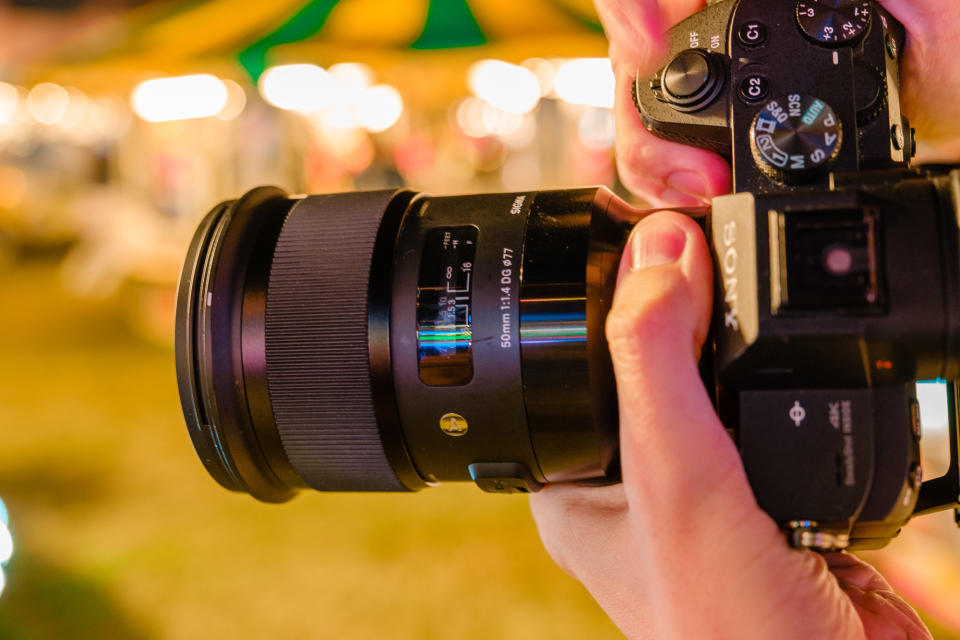
17. Sigma 50mm f/1.4 DG HSM | A
A ‘standard’ prime of above-standard quality
Mount: L-mount | Lens construction: 13 elements in 8 groups | Angle of view: 47 degrees | Minimum focus distance: 0.4m | Maximum magnification ratio: 0.18x | Filter size: 77mm | Dimensions: 85x100mm | Weight: 815g
Better than most competing DSLR lenses
Good build quality and handling
No weather-seals
Fairly big and heavy
We always used to think that this Sigma Art lens was massively big and heavy for a 50mm f/1.4 prime, but that’s before Panasonic’s competitor came along. As it stands, the Sigma is noticeably smaller and lighter than the Panasonic, and isn’t much more than a quarter of the price in the UK, although it’s not such outstanding value in the USA, where it’s closer to half the price of the Panasonic. Like the Sigma 35mm f/1.4 Art lens, the 50mm was originally designed for DSLRs and has been adapted for L-mount cameras. The optical path and ring-type autofocus system are largely unchanged and, also like the Sigma 35mm Art lens, there are no weather-seals. Even so, build quality is very good and the lens certainly delivers in terms of image quality, making it a great buy in the UK.
Read more: Sigma 50mm f/1.4 DG HSM | A review
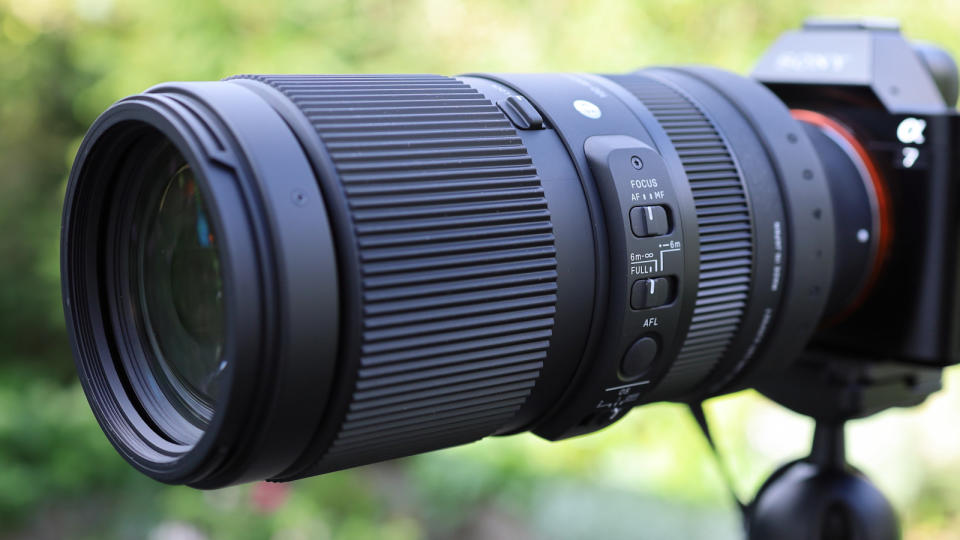
18. Sigma 100-400mm f/5-6.3 DG DN OS | C
Sigma’s popular 100-400mm lightweight zoom, re-engineered
Mount: L-mount | Lens construction: 22 elements in 16 groups | Angle of view: 24 to 6 degrees | Minimum focus distance: 1.1m | Maximum magnification ratio: 0.24x | Filter size: 67mm | Dimensions: 86x197mm | Weight: 1,135g
Powerful telephoto zoom range
Relatively compact and lightweight
Narrow aperture at long zoom settings
Pricier than older DSLR version
Nicknamed the ‘light bazooka’, Sigma launched a relatively compact and lightweight 100-400mm zoom for Canon and Nikon DSLRs back in 2017. Three years down the line, this new ‘DN’ edition is now available for Leica L and Sony E mount mirrorless cameras. The optical path is upgraded and includes a top-notch FLD (‘Fluorite’ Low Dispersion) element, in addition to four SLD (Special Low Dispersion) elements. Other enhancements include a customizable Focus-lock button and a TS-111 tripod mounting ring, which is available as an optional extra (£139/$130). We’ve found the new DN lens to be sharper than the original design, throughout the entire zoom range. Overall, it’s an excellent performer at a very attractive price.
Read more: Sigma 100-400mm f/5-6.3 DG DN OS | C review
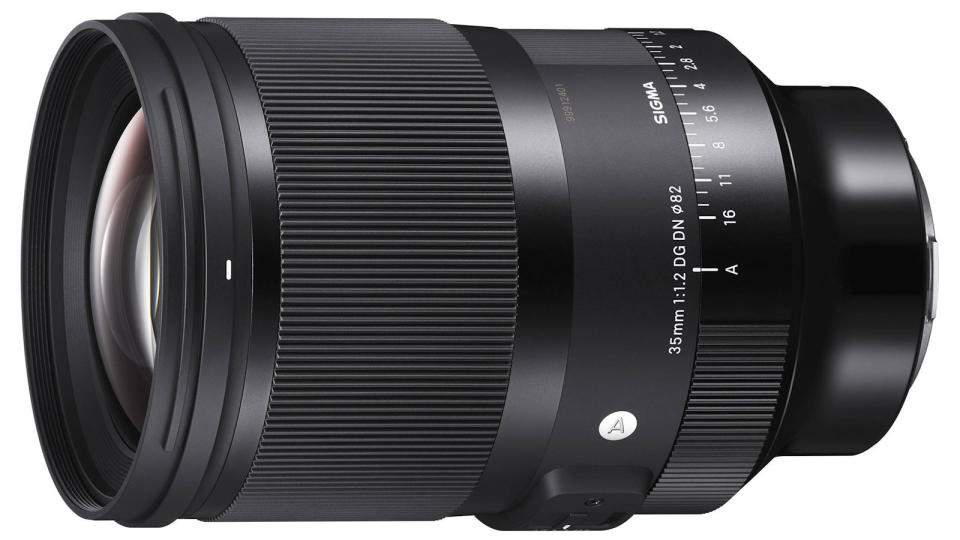
19. Sigma 35mm f/1.2 DG DN | A
A wide lens in more ways than one
Mount: L-mount | Lens construction: 17 elements in 12 groups | Angle of view: 63 degrees | Minimum focus distance: 0.3m | Maximum magnification ratio: 0.19x | Filter size: 82mm | Dimensions: 88x136mm | Weight: 1,090g
Super-fast f/1.2 aperture rating
Comprehensive weather-seals
About twice the price of Sigma’s f/1.4 lens
Fairly big and weighty
A real rarity, this is a 35mm wide-angle lens with an ultra-wide f/1.2 aperture rating. As you’d expect, the ability to pull in all that extra light comes at a cost, the design featuring extra-large front elements which add to the size and weight of the lens, as well as to the construction cost. Build quality is very good, with a comprehensive set of weather-seals and a fluorine coating on the front element. Handling benefits from a customisable function button (nominally used for autofocus lock), and an aperture ring with a Click on/off switch that enables stepless control, ideal for movie capture. Bokeh is superb for a 35mm lens, further enhanced when stopping down a little by a well-rounded 11-blade diaphragm.
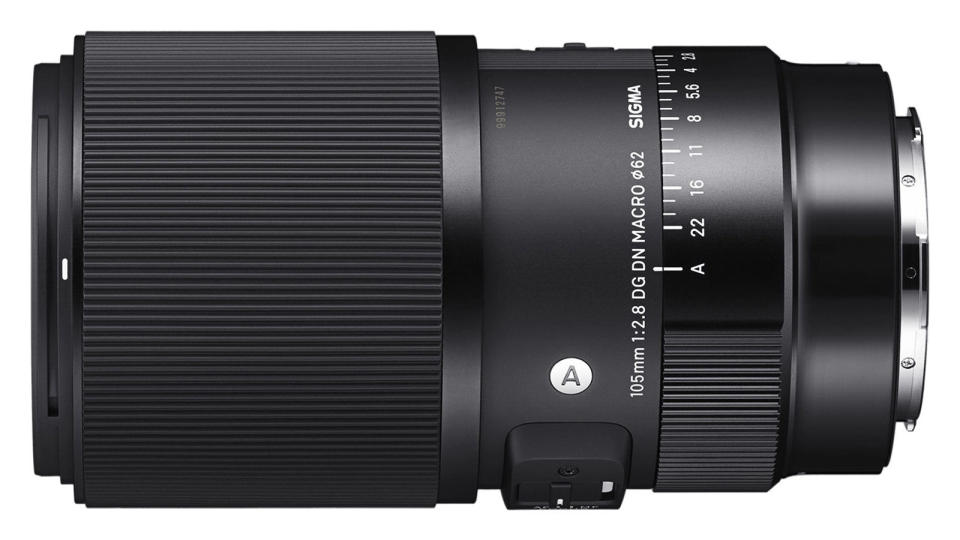
20. Sigma 105mm f/2.8 DG DN Macro | A
Great for telephoto shooting as well as for macro work
Mount: L-mount | Lens construction: 12 elements in 7 groups | Angle of view: 23 degrees | Minimum focus distance: 0.3m | Maximum magnification ratio: 1.0x | Filter size: 62mm | Dimensions: 74x134mm | Weight: 715g
Superb handling characteristics
Excellent image quality
Being a macro lens, only f/2.8
We’ve long been fans of Sigma’s 105mm f/2.8 macro prime for DSLRs, which is one of the company’s few lenses that’s still on sale despite predating the Global Vision line-up. This new lens for mirrorless cameras is a completely different and more sophisticated affair. It has Sigma’s usual L-mount trappings including a customisable autofocus hold button and de-click facility for the aperture ring, while also adding a focus range limiter that can lock out the long or short section of the overall autofocus range. Unlike the older DSLR lens, the ‘DG DN’ boasts weather-seals and a fluorine coating on the front element. It’s also compatible with Sigma’s new L-mount 1.4x and 2.0x teleconverters, which boost the maximum 1.0x macro magnification to 1.4x or 2.0x respectively.
Best Leica L-mount lenses
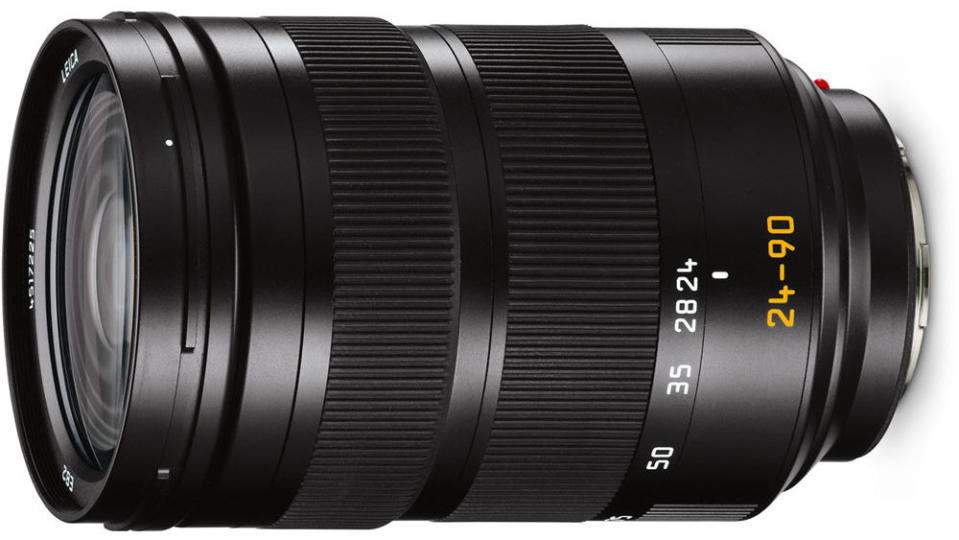
21. Leica Vario-Elmarit-SL 24-90mm f/2.8-4 ASPH
A standard zoom that stretches further than most
Mount: L-mount | Lens construction: 18 elements in 15 groups | Angle of view: 92 to 28 degrees | Minimum focus distance: 0.3m | Maximum magnification ratio: 0.26x | Filter size: 82mm | Dimensions: 88x138mm | Weight: 1,140g
Big zoom range
Impeccable build quality
Variable aperture rating
Fairly heavy and very expensive
Compared with typical 24-70mm f/2.8 pro-grade standard zooms, this Leica lens stretches further to 90mm, delivering a more portrait-friendly maximum focal length. The flipside is that it has a variable rather than constant aperture rating, narrowing to f/4 at the long end of the zoom range. Even so, you can still get a fairly tight depth of field, especially towards the closest focus distance of just 0.3m or one foot. Typical of Leica SL-series optics, the German build quality is immaculate and the construction certainly looks and feels the business in anodised black. Four aspherical elements are employed in the optical path, along with 11 anomalous partial dispersion glass elements and Leica’s water-repellent AquaDura coating on the front and rear elements. As you’d expect, the lens is weather-sealed and it also features a 3.5-stop optical stabilizer. All in all, it’s a great lens but, then again, it really should be for this sort of money.
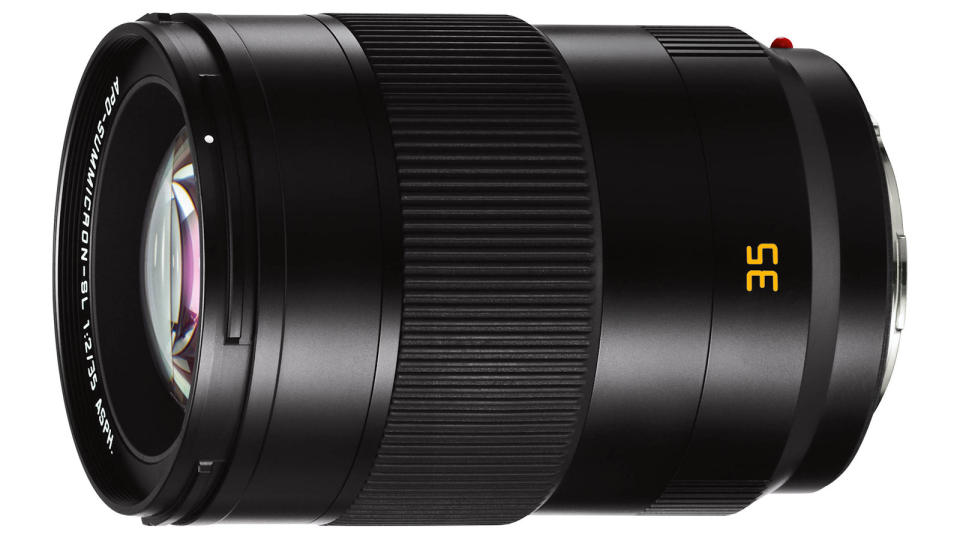
22. Leica APO-Summicron-SL 35mm f/2 ASPH
One of four Summicron primes in Leica’s line-up
Mount: L-mount | Lens construction: 13 elements in 11 groups | Angle of view: 63 degrees | Minimum focus distance: 0.27m | Maximum magnification ratio: 0.2x | Filter size: 67mm | Dimensions: 73x102mm | Weight: 750g
Fast, near-silent autofocus
Excellent image quality
Not the fastest aperture, at f/2
Quite weighty for a 35mm f/2 lens
Leica currently markets four Summicron-SL prime lenses with 35mm, 50mm, 75mm and 90mm focal lengths, all of which have an f/2 aperture rating. For many, the natural perspective of the 35mm lens will make it the most appealing in the line-up, and there’s certainly a lot to like. As with its siblings, this lens has an exceptionally well finished black anodised metal barrel which is sturdy, robust and fully weather-sealed. However, it’s typically heavy, weighing more than Sigma’s 35mm f/1.4 lens which is a full f/stop faster. Further usual Summicron attractions include a Dual Syncro Drive autofocus system which is very fast and virtually silent. Manual focusing is a real pleasure too, based on magnetic attraction which senses the angle of rotation and rotational speed of the focus ring to drive the internal electronics. Image quality is sublime but depth of field isn’t as tight as with a competing f/1.4 lens.
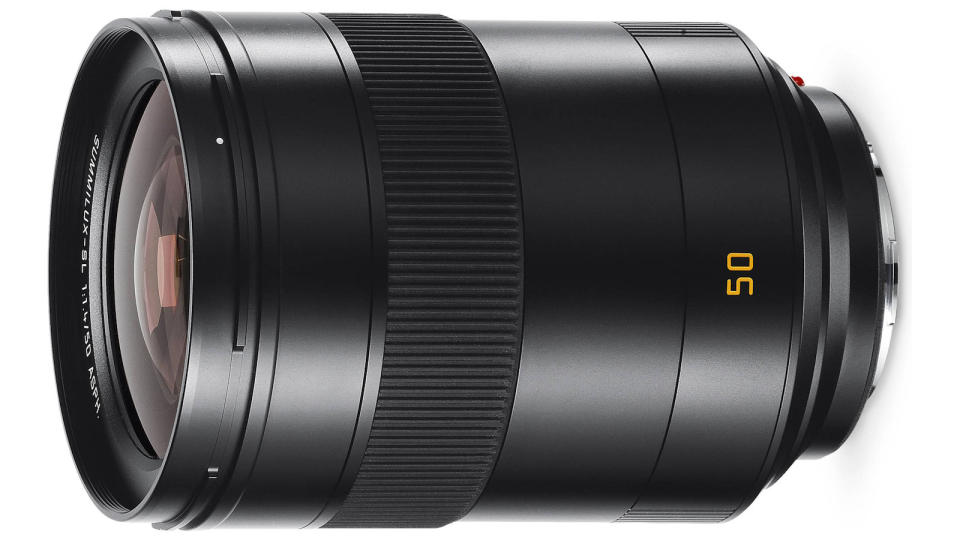
23. Leica Summilux-SL 50mm f/1.4 ASPH
A standard prime at a very non-standard price
Mount: L-mount | Lens construction: 11 elements in 9 groups | Angle of view: 48 degrees | Minimum focus distance: 0.6m | Maximum magnification ratio: 0.1x | Filter size: 82mm | Dimensions: 88x124mm | Weight: 1,065g
Fast f/1.4 aperture rating
Superb quality and performance
Relatively large and heavy
Very expensive to buy
Considering that this 50mm f/1.4 prime lens costs as much as many photographers would spend on an entire full-frame camera outfit, it should be something pretty special. A full f/stop faster than Leica’s Summicron 50mm f/2 lens, the Summilux lets in more light and delivers a tighter depth of field. Sharpness and contrast are spectacular, even when shooting wide-open, while spherical and chromatic aberrations are minimised by the use of two aspherical elements and four anomalous partial dispersion elements. The lens is weather-sealed and built to the highest standards, as you’d expect at this sort of price. See our full Leica Summilux-SL 50mm f/1.4 ASPH lens review.
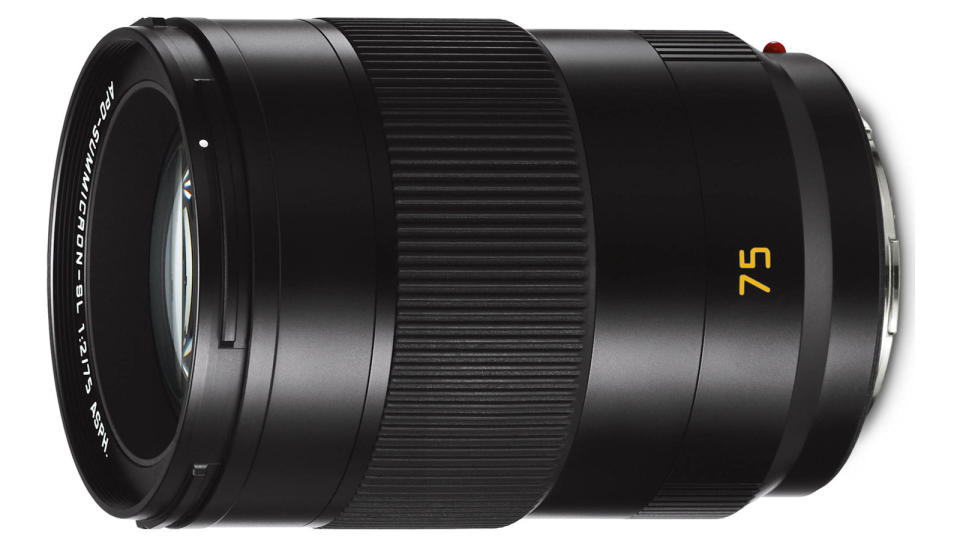
24. Leica APO-Summicron-SL 75mm f/2 ASPH
The second-longest of the Summicron primes
Mount: L-mount | Lens construction: 11 elements in 9 groups | Angle of view: 32 degrees | Minimum focus distance: 0.5m | Maximum magnification ratio: 0.2x | Filter size: 67mm | Dimensions: 73x102mm | Weight: 720g
Portrait-friendly focal length
Fairly tight depth of field
Typically expensive
An f/stop slower than 85mm f/1.4 lenses
This is the shorter of Leica’s two current Summicron f/2 telephoto primes, the other being a 90mm lens. Leica actually markets the 75mm as a ‘transitional lens’, bridging the gap between standard and telephoto focal lengths. As with other Summicron lenses, it has a Dual Syncro Drive autofocus system that’s super-fast and ultra-quiet, along with highly tactile and intuitive electromagnetic manual focusing. Again, it’s an apochromatic design that virtually eliminates chromatic aberrations, while multi-layer coatings are on hand to suppress ghosting and flare. Sharpness and contrast are up the typically excellent standard of Summicron lenses and the level of build quality is absolutely top-drawer.
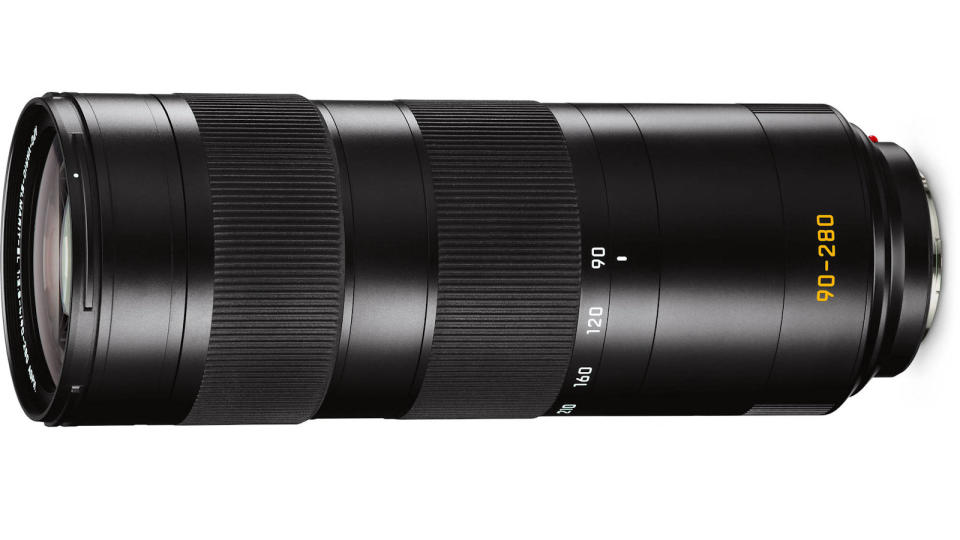
25. Leica APO Vario-Elmarit-SL 90-280mm f/2.8-4
The perfect telephoto companion to Leica’s 24-90mm standard zoom
Mount: L-mount | Lens construction: 23 elements in 17 groups | Angle of view: 26 to 9 degrees | Minimum focus distance: 0.6m | Maximum magnification ratio: 0.21x | Filter size: 82mm | Dimensions: 88x238mm | Weight: 1,850g
Long telephoto reach
Superb build and image quality
Massively expensive
Heavy at nearly 2kg
Neatly picking up the baton from Leica’s 24-90mm, this telephoto zoom has a longer zoom range than the more usual 70-200mm fare and, as with Leica’s standard zoom, the aperture narrows from f/2.8 to f/4 at longer focal lengths. Even so, you can still get a fairly tight depth of field throughout the entire zoom range. The shortest focus distance is pretty impressive for such a long lens, at 0.6m or two feet. As you’d expect with such a heavyweight lens, it comes complete with a tripod mounting ring and, as you’d hope for in a long telephoto zoom, optical image stabilization is built-in, with 3.5-stop effectiveness. Fast and virtually silent autofocus is delivered by the Dual Syncro Drive system and image quality is fabulous in all respects. The only real sticking point is the exorbitant purchase price.
How we test lenses
We test lenses using both real world sample images and lab tests. Our lab tests are carried out scientifically in controlled conditions using the Imatest testing suite, which consists of custom charts and analysis software that measures resolution in line widths/picture height, a measurement widely used in lens and camera testing. We find the combination of lab and real-word testing works best, as each reveals different qualities and characteristics.
Read more:
• Best Panasonic cameras
• Best Leica cameras
• Best mirrorless cameras
• Best 4K cameras
• Best professional cameras

